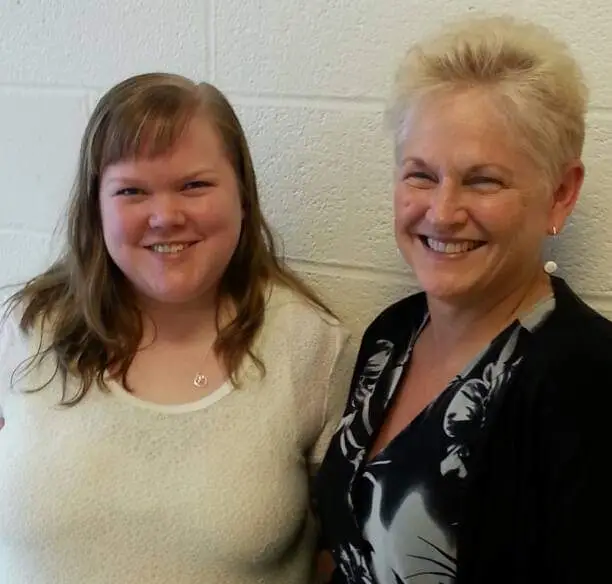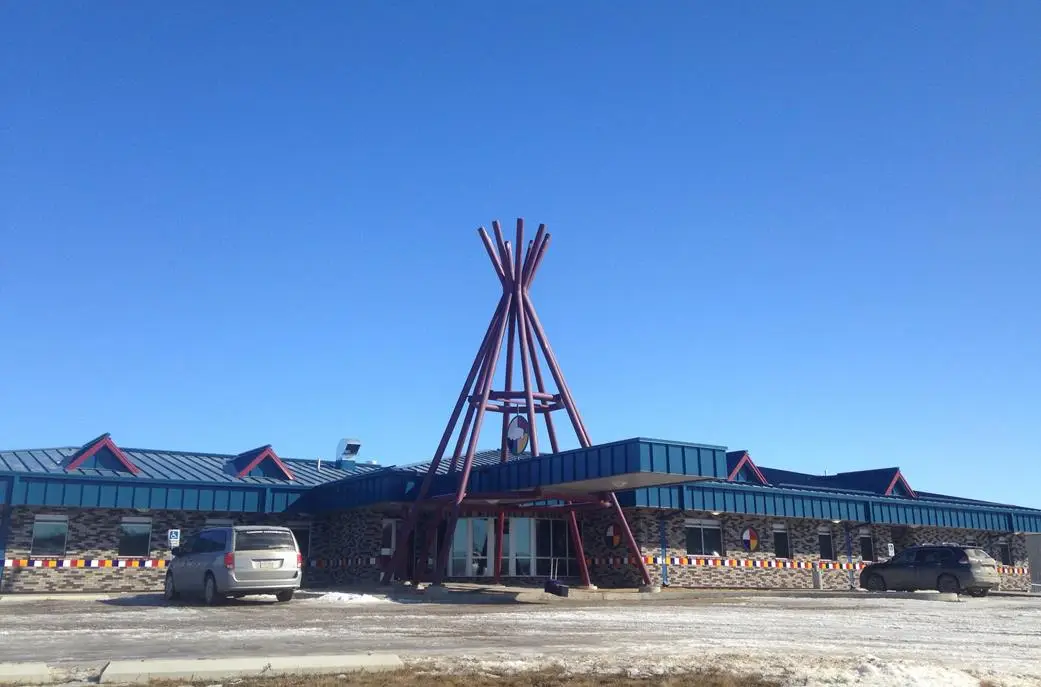The history of Saskatchewan Health Information Management Association

Emma Schroeder was the first Medical Record Librarian to be employed in Saskatchewan. Emma was a Registered Nurse whose interest in the health field led her to choose a career in medical records. She graduated from Hotel-Dieu School for Medical Record Librarians in Kingston, Ontario. She returned to Regina with the distinction of being the first Medical Record Librarian in the province. Saskatchewan. Emma was a Registered Nurse whose interest in the health field led her to choose a career in medical records. She graduated from Hotel-Dieu School for Medical Record Librarians in Kingston, Ontario. She returned to Regina with the distinction of being the first Medical Record Librarian in the province.
The inspiration for the first meeting was founded by Sister M. Julienne Head of the Medical Records Department, Holy Family Hospital, Prince Albert, Saskatchewan. She thought that the time had come for an organization of Medical Record Librarians so she decided to make a start with the hospitals in her own city. The first meeting was attended by representatives from the three hospitals of Prince Albert. They decided to organize themselves as the Regional Association of Medical Record Librarians. The officers of this original organization were; President Sister M. Julienne Holy Family Hospital, Vice-President Miss Joan Smith Victoria Union Hospital and Secretary Miss Cathie Pepper from Prince Albert Sanatorium.
Letters of invitation were sent to hospitals with over 20 beds, within the province. Medical record personnel convened in Saskatoon, Saskatchewan on October 15, 1958 for the purpose of organizing a Saskatchewan Association of Medical Record Librarians. Representatives from Melville, Saskatoon, Regina, Yorkton, Macklin, Moose Jaw, Prince Albert, Gravelbourg, Humboldt, Radville, Shellbrook, Tisdale, Estevan, Swift Current, Wadena and North Battleford were present.
- 1958 – Saskatchewan Association of Medical Records Librarians (SAMRL) drafted Constitution and bylaws, basic inquire and groundwork for Medical Terminology Course and plans for first annual convention were started.
- 1959 – Membership was 22 Active and 18 Associates and first Annual Convention was held.
- 1961 – Medical Terminology course was left dormant pending the Technician and Clerk course. Four students graduated from the first Medical Records Librarian course. (L-R Lynette Nixon, Maureen Jeffrey, Loreen Jackson, Joan Skinner) The SAMRL voted at the fall Annual General Meeting (AGM) to become a member of the Saskatchewan Hospital Association.
- 1962 – Taken from the minutes of the AGM President report; “Our year has a note of sadness in it. With the sudden passing of Alice Rublee, our membership lost a most ardent and energetic worker. I hope that we as a member can establish some worthy momentum to honor her valuable work.” At that meeting the membership voted and passed that a medal be presented each year in memory of the late Miss Rublee to a student graduating from the Saskatchewan School for Medical Record Librarians who showed general proficiency. This award continues to be presented to one graduating student from the Health Information Management program at Sask Polytech who meets the qualification of the award to this present day.
- 1963 – SAMRL celebrated 5 years as an association Emma Schroeder Over the years the executive met quarterly developing Bylaws, Rules and Regulations, Awards and struck many task teams for publications and even a Newsletter Committee. However, finding volunteers for these teams proved a challenge even in the early years. An entry in the May 6, 1967 meeting minutes read; “due to lack of cooperation from members at large and hence inability to form an Institute Committee, the Annual Institute cannot be held this spring” A problem that plagued the association through the years.
- 1968 – Executive felt that an official emblem be designed for use on papers and documents and signify membership in the SAMRL and to also create an esprit de corps.
- 1970 – Minutes taken from the AGM; representative from Manpower Research in Medical records addressed the group, his study convinced him that our educational program needed expansion in order to cover newer methods such as automation, administration, etc. He strongly emphasized that we must go out and sell our profession.
- From 1974 to 1978 the Executive continue to lay the groundwork for the Association. Reviewing salary scales, offering eduction workshops and membership grew to 118 registered members. Members voted in favor of changing their name from SARML to Saskatchewan Health Record Association (SHRA) in keeping with trends and a logo contest was held. In those years technology is changing rapidly and the executive approved the purchase of an electric typewriter for the Executive Secretary in 1977.
- 1978 – Brings about the 20th anniversary of the association and they are 151 members strong.

The 80s brought more change to the association with the members once again changing the association logo. Annual conventions were held to bring the members together from around the province for socializing and continued education as well to hold Annual General Meetings. 1988 SIAST Students are invited to join the association. Members saw revisions of ICD 9 coding manuals and strategic planning becomes part of the conversations. Negotiation with unions on wage discrepancy among the profession heats up.
In 1990, the Executive suggests that they are not recognized enough and that they should give a plaque to a member of the association at the annual meeting. The first SHRA Outstanding Member Award is presented to a member in fall of 1990. Many very deserving past executive and members have been presented this award over the years. The award was later renamed after the late Kathy Marcotte in 2011 in recognition of her dedication to the profession and to the association through attending conventions as a presenter and continued education sessions. As the years pass the strength of the association grows and a representative of the association joins many other disciplines at SIAST for the Program Advisory Committee. The purpose of the committee is to review the health record technology program and to provide recommendations. The association sets up its first permanent address in Saskatoon and sees successful attendance from its members to Spring Professional Development Day. They start the long arduous task of assisting the Canadian Health Records Association (CHRA) with the Infocus Role Clarification Project as well as talks begin with the province for Data Quality Committee to develop consistent coding standards.
The 2000s brought about some of the final changes to the look of the association, the name was changed from Saskatchewan Health Records Association to Saskatchewan Health Information Management Association (SHIMA) along with its final logo represented by the wheat sheath. The quickly advancing technology saw the creation of the SHIMA website this was used to communicate to the members and to showcase SHIMA on an international platform. With improved visibility and credibility the association secured its first corporate sponsor. In 2008 SHIMA celebrated its Golden anniversary and the Joint Job Evaluation brought about big changes for wage parody within the province. The association also begins to hear the whispers of a unified national association. Many concerns and issues are brought to the table by the provincial association at the National Health Information Association and eventually the pilot program does not come to light. In 2015 the National Health Information Management Association (NHIMA) members tabled the desire to move to a Chapter Model due to volunteer fatigue, reductions in membership and concerns regarding ongoing sustainability of most Provincial Associations across the country. NHIMA engaged CHIMA to develop a model and present it to NHIMA. The provincial associations throughout Canada could either remain independent associations paralleled by provincial chapters or they may choose to dissolve as a provincial association and transition to the proposed One National Association with Chapters Model. This model was designed to be inclusive of all CHIMA members (not all province and territories had been part of NHIMA), consistent, equitable, with a focus on continuing education, networking and communication. Every member of CHIMA would automatically be a member of a geographic Chapter, which is based on the location of the member’s residence. The membership went to a vote at the Annual General Meeting in September 2015 and unanimously voted in favor of dissolving the provincial association and transition to the Saskatchewan Chapter of the One National Association with Chapters Model. February 2016 saw the hard work of the last three executive putting in place the final changes required to transition to the new stronger unified national association and say our final farewell to the provincial association. We can only wonder what Sister M. Julienne would think if she saw how her hard work to bring us together provincially eventually lead us to become unified nationally.
The association was started with the meeting of three very dedicated Health Records Librarians with a vision to bring together Librarians from all corners of the province to promote, learn and grow strong together as profession and an association. The provincial association started with three members, it is with great irony that it finished with three executive members. As we dissolve as a provincial association and move forward to a One Chapter Model the three outgoing executive did not want the hard work and history of the provincial association lost with time. So we dedicate the history of our provincial association to all the past and present members for all your hard work, dedication and commitment to the association.
Tell me and I forget, teach me and I may remember, involve me and I learn.
– Benjamin Franklin






